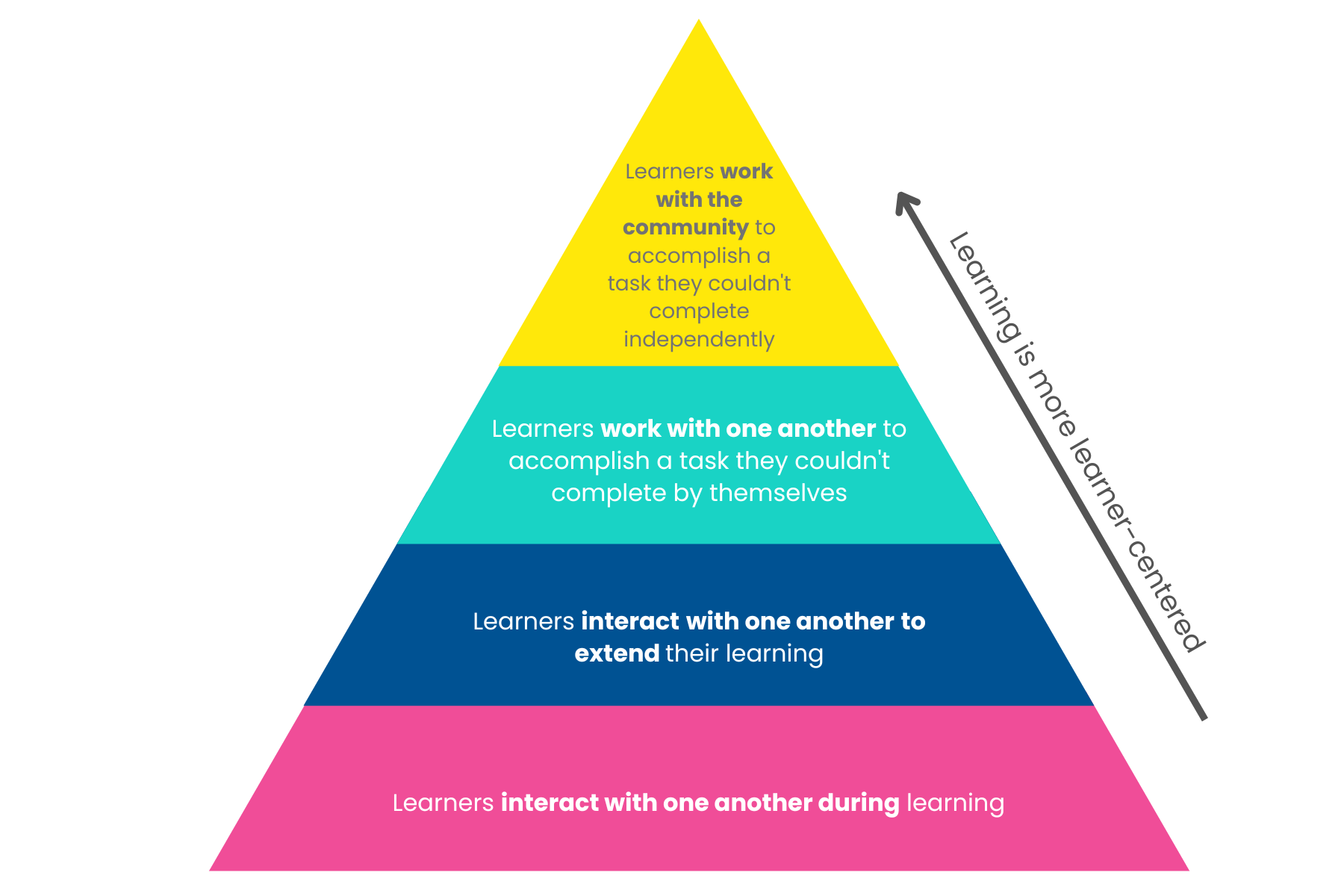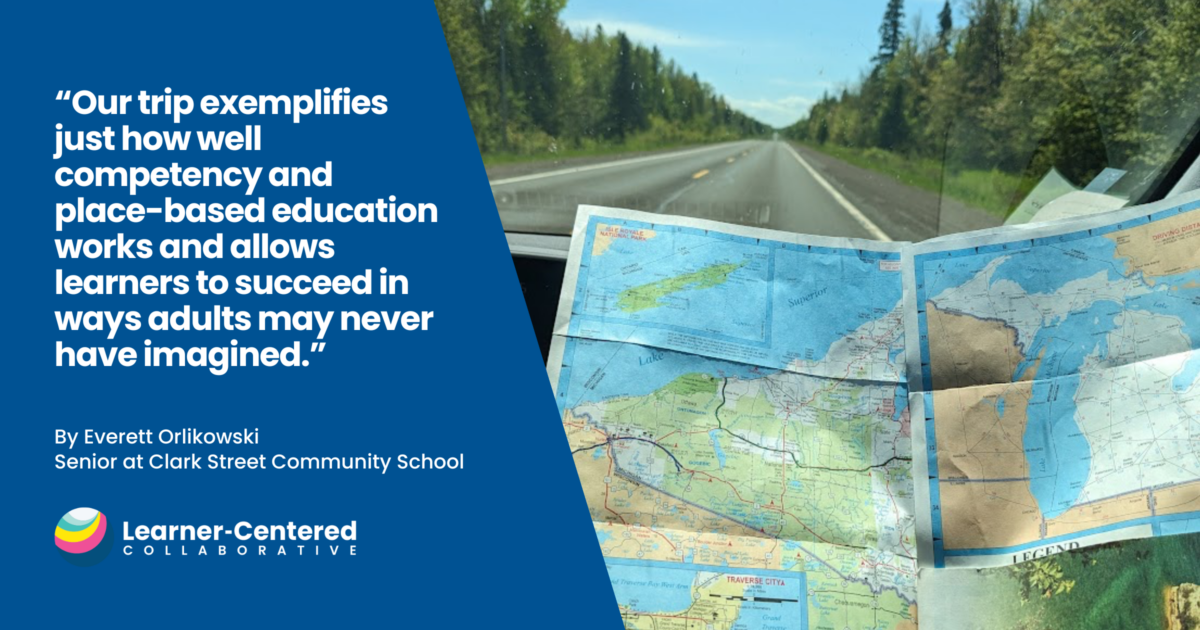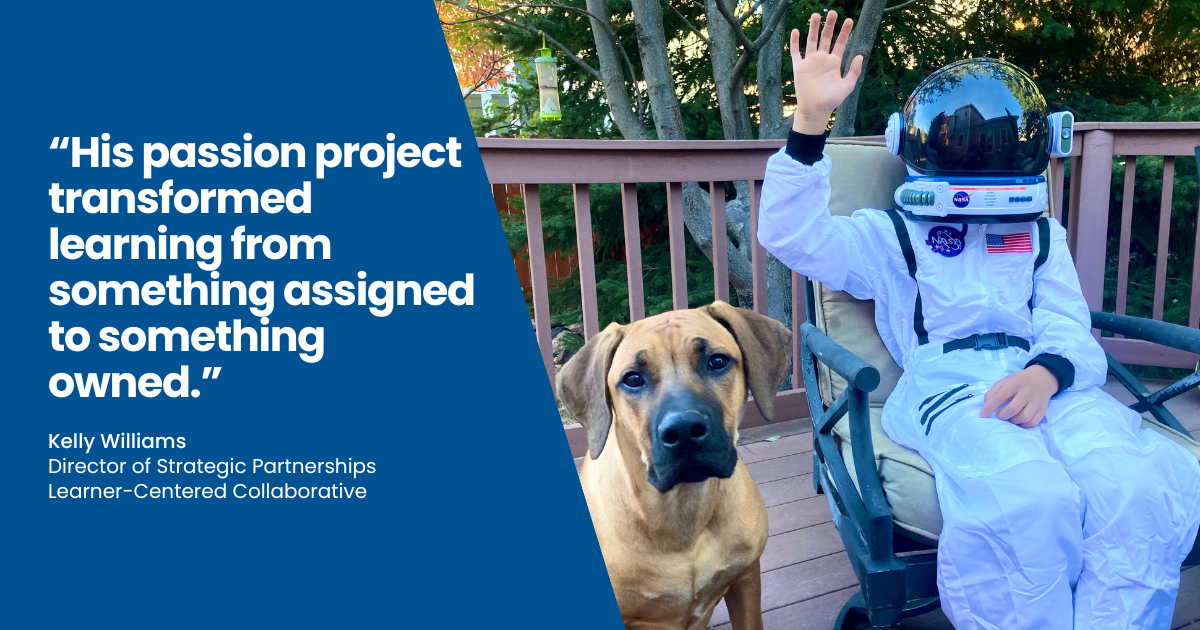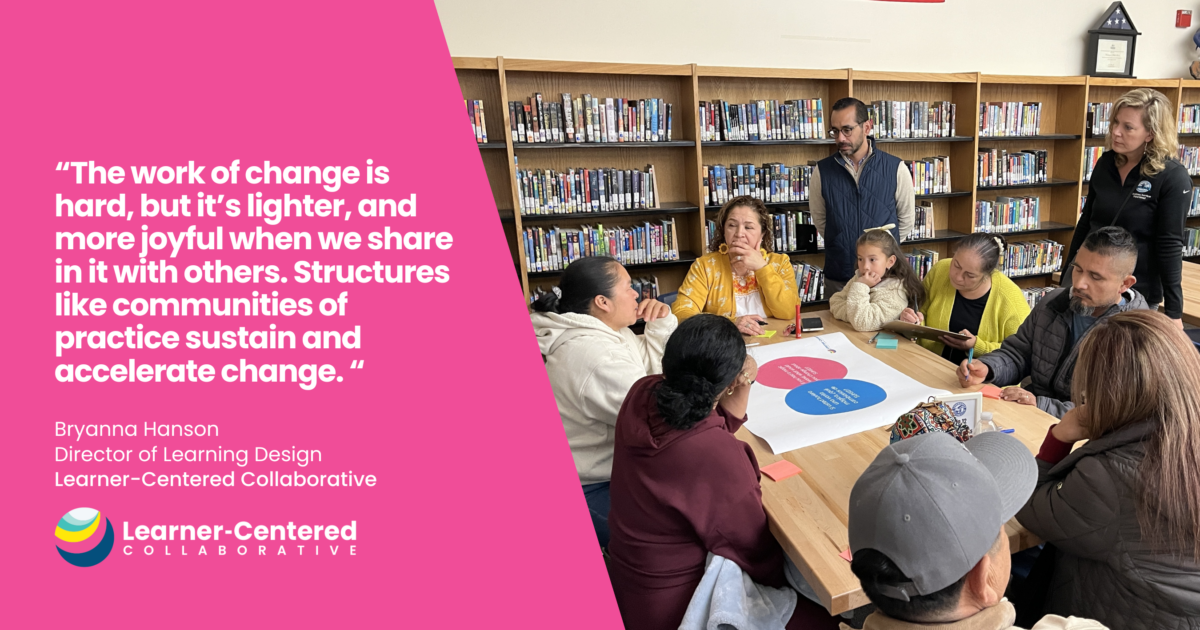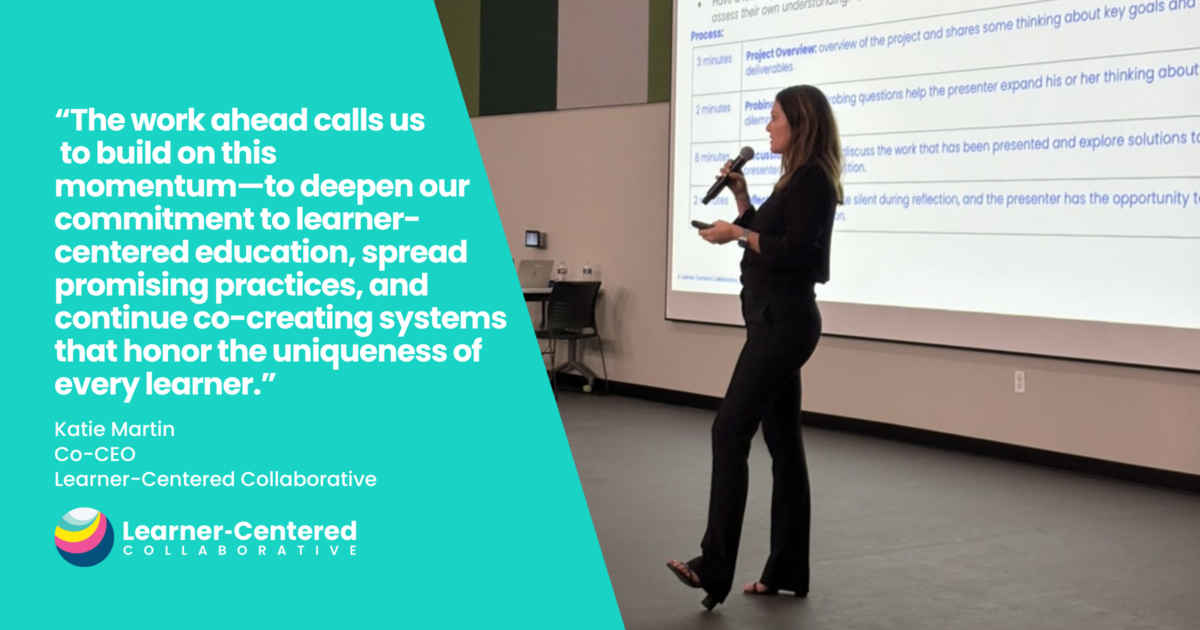Scaling the Collaboration Pyramid
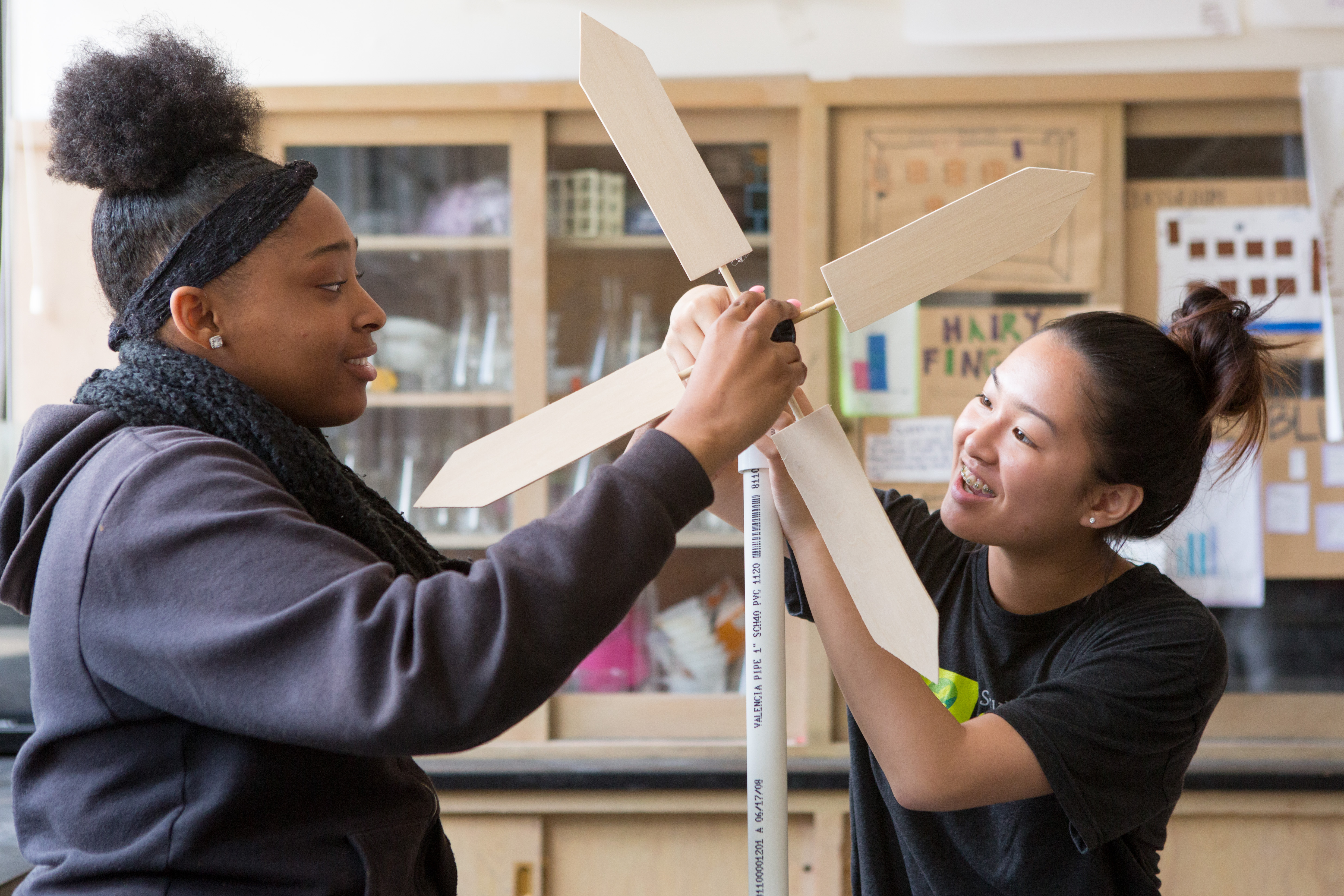
Collaboration is a top skill employers look for according to LinkedIn, Glassdoor and Indeed, all job search tools that see thousands of job postings everyday. It’s not surprising then that in a review of over 50 school, district, and state Learner Profiles (often called Graduate Profiles or Portraits of a Graduate), we found collaboration as a common desired learner outcome. At Learner-Centered Collaborative, our framework prioritizes collaboration as one of our three whole-learner outcomes we believe are key for learners to be successful in the world.
If collaboration is a skill we want to build in our learners, it’s logical that learners should participate in more collaborative learning experiences. Traditionally, school has been very individualistic — for the last century, students have sat in rows where they are discouraged from talking with others and tested independently by answering questions or writing essays. In these learning environments learners have not been able to build effective collaboration skills, because they have not been asked to meaningfully collaborate.
“The person doing the talking is often the person doing the learning.”
-Jen York-Barr
Author, Reflective Practice for Renewing Schools: An Action Guide for Educators
Aside from being a marketable skill to employees, collaboration is beneficial for learning itself. According to Psychology Today, humans do most learning socially, meaning we learn from others rather than discovering things ourselves. Our brains are wired for making meaning through interaction, discussion, and reflection with others. In fact, the National Education Association says that “collaborative learning has been shown to not only develop higher-level thinking skills in students, but boost their confidence and self-esteem as well. Group projects can maximize educational experience by demonstrating the material, while improving social and interpersonal skills.”
Multiple studies have pointed to the social, psychological and academic benefits of collaborative work among students. Collaborative activities can lead to diversity of thought, lead to more actively engaged learners who are better able to solve real-world problems, promote critical thinking skills, reduce anxiety, and form a positive community for learners.
What is collaboration? Is it different from cooperation?
Cooperative learning is a buzzword in education that puts an emphasis on activities where “rather than individuals working in parallel in a group, students need each other to complete the task”. However, we can’t stop at cooperative learning. Ron Ashkenas in the Harvard Business Review, writes that collaboration “takes much more than people being willing to get together, share information, and cooperate.” According to Ashkenas, collaboration requires negotiation, aligned goals, efforts and resources with interdependent tasks that individuals complete.
What does collaborative learning look like?
Ask anyone about their experience in a group project, and a common response is that one person did all of the work. So, how do we ensure collaborative learning is effective and engaging for all learners? We believe that building foundational collaboration skills with learners and designing a variety of collaborative opportunities is the key.
This collaboration pyramid represents different ways learners can work together during learning. Notice the higher up the pyramid, the more authentic and learner-centered the learning becomes. The width of the pyramid is of relevance as well. It’s likely students of all ages will spend most of their collaborative time at the bottom of this pyramid, because these can be incorporated into daily classroom experiences. Activities at the top of the pyramid require more time and skill. It’s advisable to begin collaborative learning experiences at the bottom of the collaboration pyramid to build and practice collaboration skills in a low-lift and low-risk way.
Use our Authentic Learning Matrix to identify strengths and opportunities for authentic, collaborative learning in your community.
Let’s explore each tier:
Students interact with one another during learning
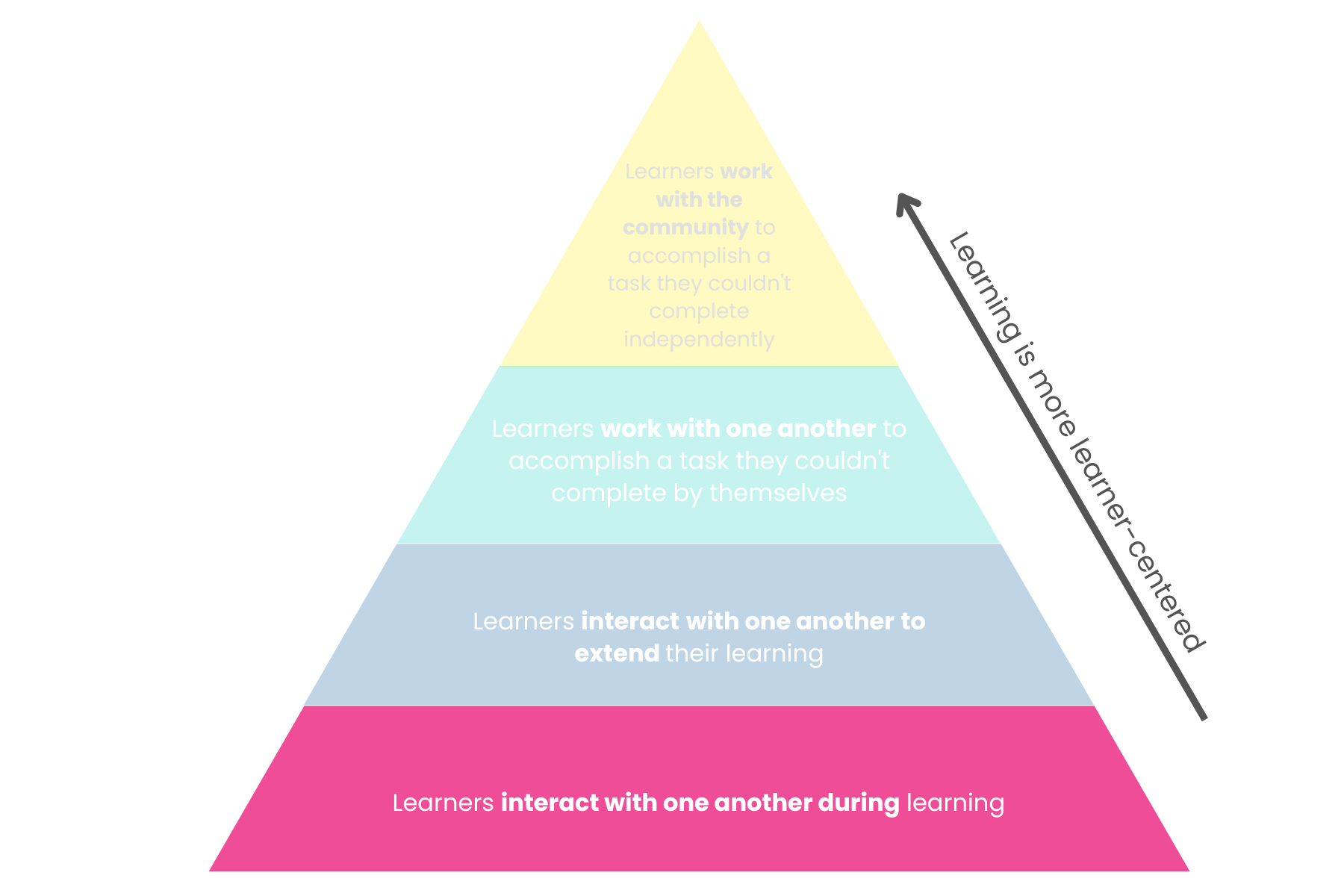
The bottom tier of the pyramid emphasizes student interaction. At this foundational level, the learning could happen independently, but by interacting, students are involved in a social process.
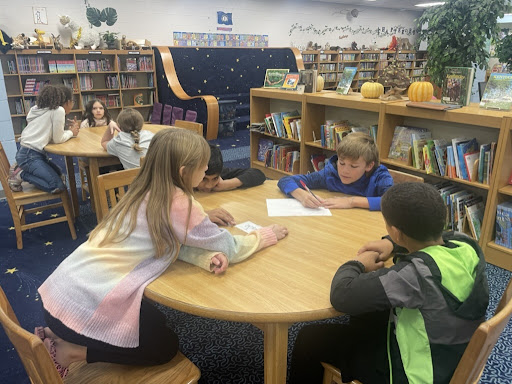 Elementary students in Muhlenberg County School District in Kentucky work together in groups to reflect on what works well for them in school and what they would change if they could.
Elementary students in Muhlenberg County School District in Kentucky work together in groups to reflect on what works well for them in school and what they would change if they could.
Strategies such as Kagan cooperative learning strategies would fit into this category, as would “turn and talk” or “think-pair-share”. This is a great place to begin with students to build and practice collaboration skills in a low-lift and low-risk way.
For more strategies, check out our Authentic Learning Toolkit.
Students interact with one another to extend their learning
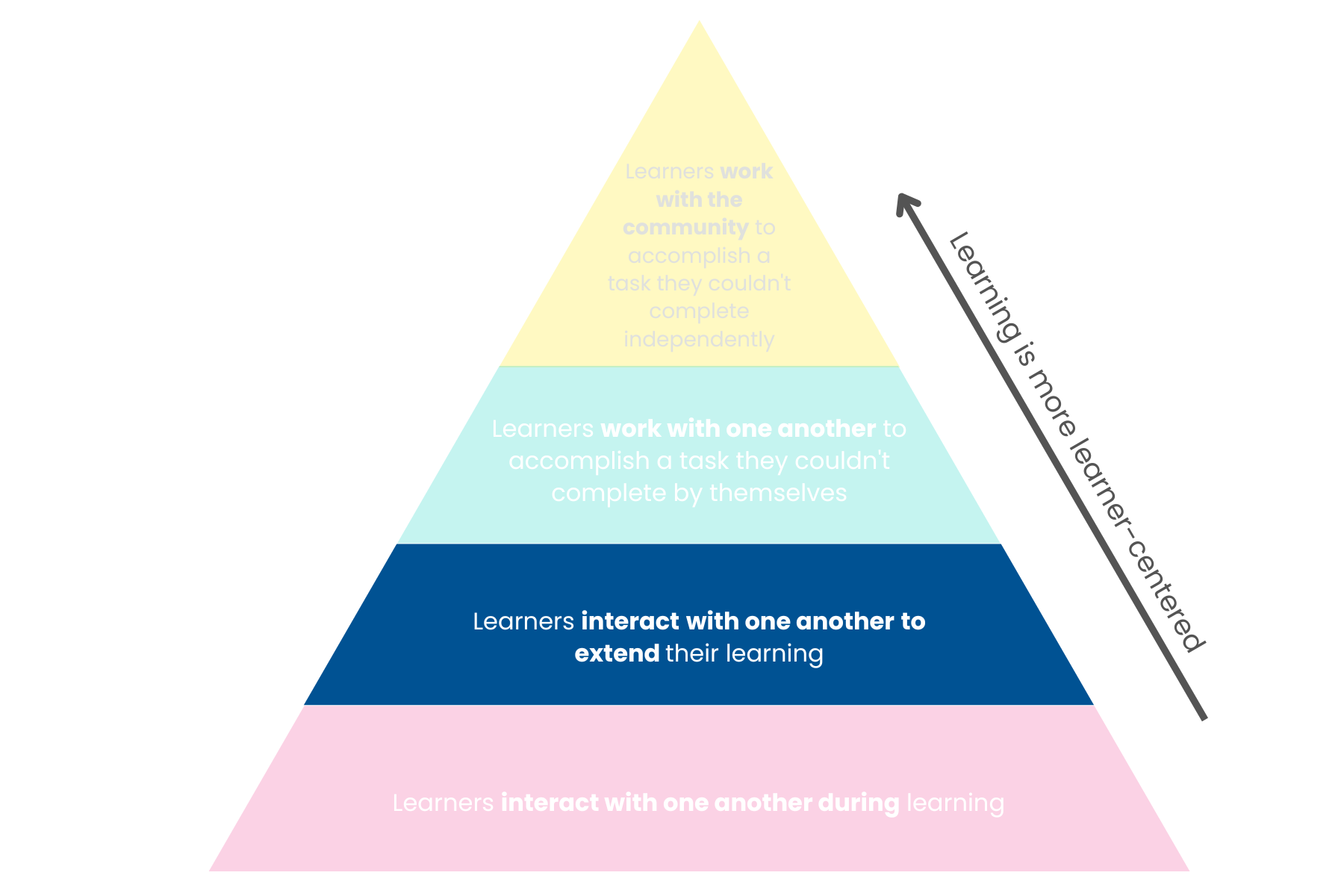 The second tier of the pyramid includes experiences that extend learning through interaction. In these experiences, students could do the work independently but their learning is extended by interaction.
The second tier of the pyramid includes experiences that extend learning through interaction. In these experiences, students could do the work independently but their learning is extended by interaction.
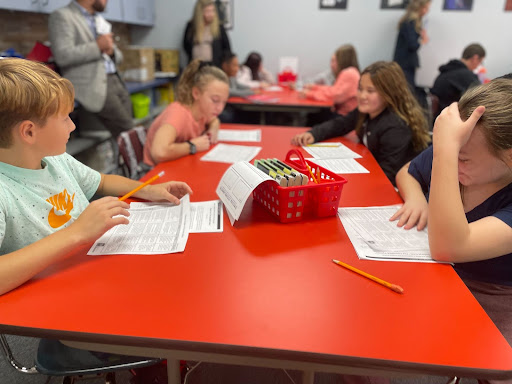 6th grade students at Sevier Middle School in Kingsport, TN start their writing unit in collaborative small groups. First, they discuss words or concepts in the writing rubric that they don’t understand. Then, they use the rubric to practice assessing three writing samples. They deepen their understanding by making meaning through conversation before they begin writing their own essays.
6th grade students at Sevier Middle School in Kingsport, TN start their writing unit in collaborative small groups. First, they discuss words or concepts in the writing rubric that they don’t understand. Then, they use the rubric to practice assessing three writing samples. They deepen their understanding by making meaning through conversation before they begin writing their own essays.
Other examples of strategies in this category include Jigsaw (a Kagan strategy) and a tuning or Charrette feedback protocol.
Students work with one another to accomplish a task they couldn’t complete by themselves
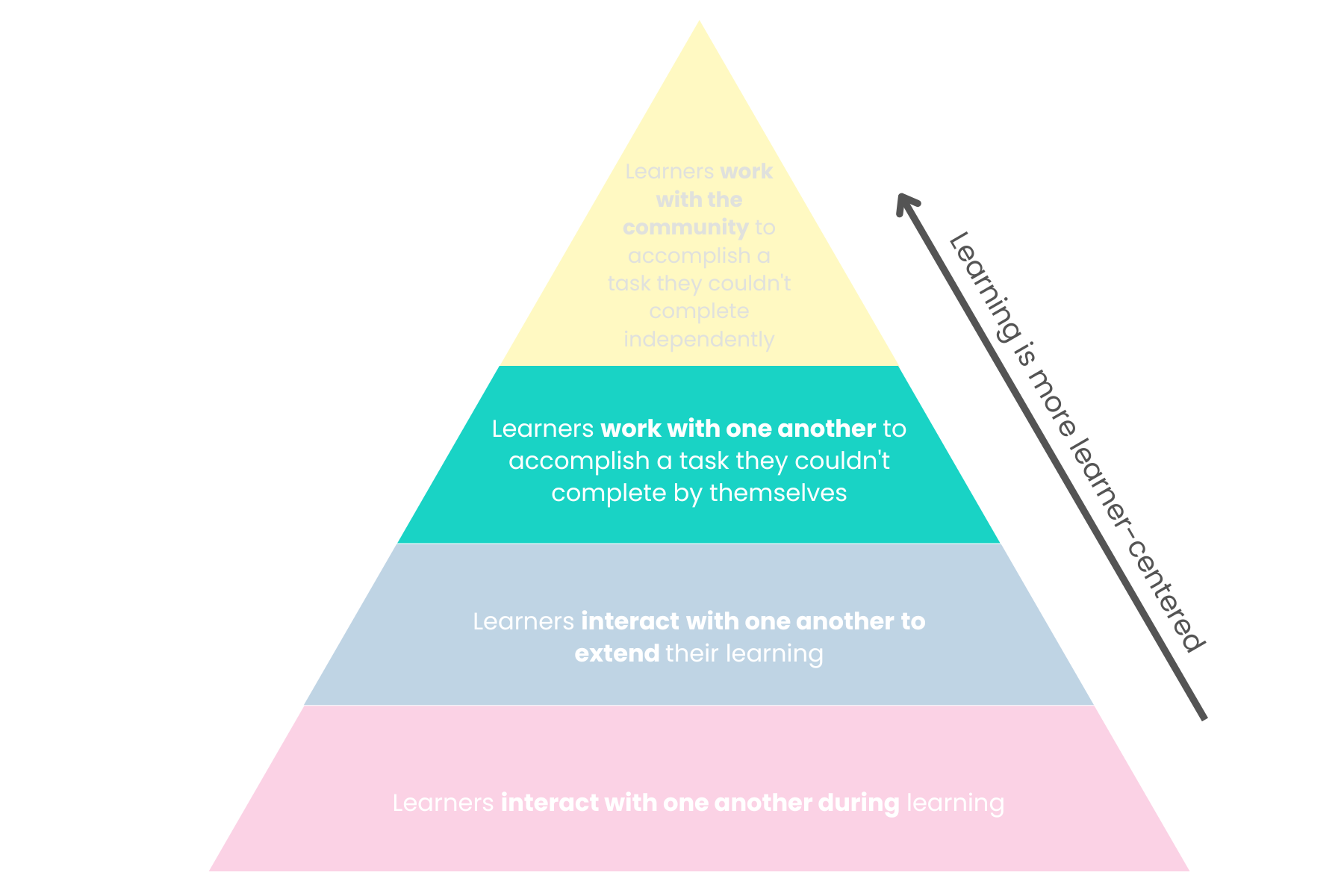 In this type of collaborative learning experience students work in groups (what we might refer to as group work) with their peers to really accomplish something that they couldn’t do alone.
In this type of collaborative learning experience students work in groups (what we might refer to as group work) with their peers to really accomplish something that they couldn’t do alone.
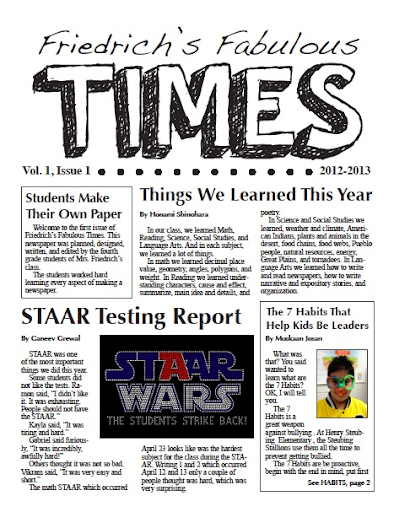
In one 4th grade, students worked collaboratively to create their own class newspaper. Each student contributed content or expertise in their own unique way. To learn more about how Mrs. Friedrich accomplished this with her students, read this 3-part blog post.
Collaboration strategies in this category include Project-based learning experiences as well as collaborative inquiry and research activities such as this example, and collaborative discussions or debates such as the Paideia seminar.
Students work with the community to accomplish a task they couldn’t complete by themselves
 Collaboration among students isn’t the only way students can collaborate. Collaborating with the community broadens students’ network and builds the skill of working with people that they do not know well.
Collaboration among students isn’t the only way students can collaborate. Collaborating with the community broadens students’ network and builds the skill of working with people that they do not know well.
At The Mount Vernon School, educator Meg Cureton’s high school students worked with a developer to design a pocket park – a micro element of a modern shopping center where young children could play – for a new shopping center that was being built in a nearby town.
Students worked collaboratively through the Design Thinking process to create a comprehensive plan for the pocket park. They consulted with community members, architects, financial planners, and other local experts during this experience.
The pocket park is now enjoyed by the entire community.
This type of collaboration is at the top of the pyramid for a reason. It takes a lot of time, a lot of skill, and it requires relationships with the community. Although these learning experiences may not happen often, they are invaluable to students because they are purposeful, have an authentic audience, and build collaboration skills while solving real problems.
Other collaboration strategies in this category include reverse mentorship, design thinking projects, and engaging with experts in the field.
Level up collaboration in your learning community. Take our “Spark Collaboration” online course and gain strategies to implement in your practice right away.
As you think about collaborative learning experiences you have experienced or designed, where do they fall in the pyramid of collaboration? If you engage with a higher tier and struggle, consider exploring a lower tier to build collaboration skills in lower-risk ways. If you engage at the bottom of the pyramid, challenge yourself to design more interdependence or community connection into your collaborative learning experiences. Then, tell us about your experiences!
